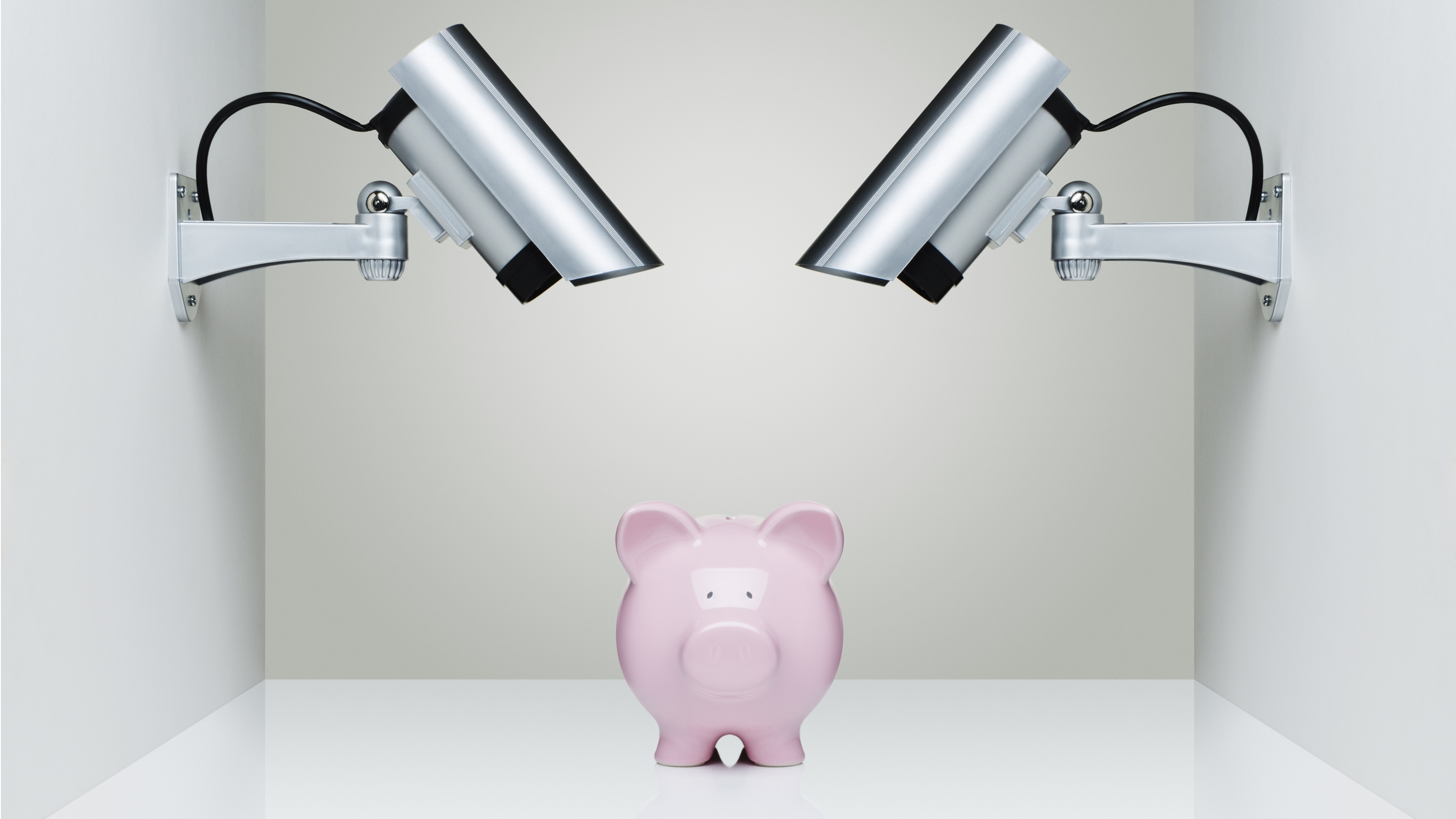Don’t Let a Bad Start in Retirement Blow Up Your Nest Egg
Retirement planning isn’t just about making money — it’s also about protecting the money you’ve already made. The 'bucket strategy' can help with that.


Remember when it seemed as though preparing for retirement success was as easy as sitting back and watching the money multiply in your 401(k), Roth IRA or brokerage accounts?
Of course you do. It was just a few short years ago when a record-setting bull market (2009 to 2020) made pretty much everyone look like an investing genius.
And then we all got a little reminder, in early 2020, that it really isn’t that easy, because the market has these cycles, and they’re pretty much unpredictable. Although the market recovered quickly after that first big COVID-related drop, it’s been a roller coaster ride ever since.
From just $107.88 $24.99 for Kiplinger Personal Finance
Become a smarter, better informed investor. Subscribe from just $107.88 $24.99, plus get up to 4 Special Issues

Sign up for Kiplinger’s Free Newsletters
Profit and prosper with the best of expert advice on investing, taxes, retirement, personal finance and more - straight to your e-mail.
Profit and prosper with the best of expert advice - straight to your e-mail.
This ongoing market volatility should serve as a cautionary tale to all savers that retirement planning isn’t just about making money — it’s also about protecting the money you’ve already made. And it’s an especially important message for those who are just a few years into their retirement or just a few years away from it. How the stock market performs — and the order in which negative and positive returns occur — can have a substantial effect on the longevity of your nest egg as you begin taking portfolio withdrawals.
If negative returns occur first, for example, and you need to sell some of your holdings for income, two things could happen. First, you may have to sell more shares at a lower price to get the amount of money you require. And then you’ll have fewer shares available to take advantage of positive returns in future years.
If you’re depending on your portfolio for a substantial portion of your retirement income, and you can’t adjust your withdrawal amount, you could end up taking out more in those first bad years than any later good years can make up for. And your portfolio could be depleted much sooner than you planned.
This is known as sequence of returns risk.
Unfortunately, it can be difficult to prepare for this particular retirement risk because it’s largely based on chance. After all, when people choose a retirement date, they have no idea what’s going to happen in the U.S. and world markets in the years ahead.
Some, for instance, got lucky by retiring in 2010 or 2011 — not long after that record-setting bull market began. But those who retired a decade before that were stung again and again — first by a bursting dotcom bubble, then 9/11 and then the Great Recession of 2008.
How can you improve your luck?
Sorry — we’re not handing out crystal balls or tarot cards or even Magic 8 Balls today. But there are strategies you can employ to help shield your portfolio from bad retirement timing.
One of those strategies is to divide your assets into three separate investing “buckets”: a cash/emergency bucket, a protected income bucket and a growth bucket. Here’s a look at how that breaks down.
Cash/emergency bucket: It can be a good idea to keep enough in this bucket to cover at least six months’ worth of living expenses. That way, if something unexpected comes up in your personal life, or the market takes a dip, you won’t feel forced to sell stocks to get the money you need in retirement — and you can still keep your budget under control.
The cash in this bucket (which you can stash in a high-yield savings account or money market account and still earn a decent amount of interest) can help you cover expensive home and car repair bills, medical bills and other surprise expenses that can pop up in retirement.
Protected income bucket: This is the bucket you’ll withdraw from in the first decade or so of retirement, so you’ll want to fill it with investments that are known to provide dependable income. It will also be your biggest bucket, although the percentage of your portfolio you devote to protected income may depend on how much you’ll receive in Social Security benefits and any pensions you might have.
One of my top go-tos for this bucket is uncapped, no-fee, fixed-index annuities, which can be used in retirement portfolios as alternatives to problematic bonds. These annuities have no initial or annual fees, they protect your principal against losses, they may increase your return compared to bonds, and they can help with portfolio diversification.
Growth bucket: This is the portion of your portfolio you’ll use to continue growing money for the future (at least 10 to 15 years into retirement). It will help your nest egg keep pace with inflation, and you can tap it to refill your protected income bucket as you spend it down.
The assets you choose for your growth bucket will depend on your age and tolerance for risk, and they could include anything from equities and commodities to investment real estate and private equity/hedge funds. If you don’t mind — or if you actually enjoy — the market roller coaster, and you have the extra money to play with, you may even choose to set aside a small percentage within this bucket for especially risky or speculative investments.
You can move to a bucket strategy at any time before or after your retirement. But it’s usually a good idea to start transitioning from an accumulation-focused portfolio to one that prioritizes preservation at least five years out. This will give you time to do some proactive planning with an experienced financial adviser. And you won’t have to worry about delaying your retirement or going back to work, even if there’s some serious market drama just before or after you stop working.
Kim Franke-Folstad contributed to this article.
Appearances in Kiplinger were obtained through a PR program. The columnist received assistance from a public relations firm in preparing this piece for submission to Kiplinger.com. Kiplinger was not compensated in any way.
Profit and prosper with the best of Kiplinger's advice on investing, taxes, retirement, personal finance and much more. Delivered daily. Enter your email in the box and click Sign Me Up.

Aaron Cirksena is the founder and CEO of MDRN Capital, a fully digital retirement planning and investment advisory firm. He is passionate about helping clients design and implement efficient and successful financial strategies. Aaron earned a bachelor’s degree in economics from the University of Maryland College Park and has more than a decade of experience as a financial adviser.
-
 A Free Tax Filing Option Just Disappeared: Here's What That Means for You
A Free Tax Filing Option Just Disappeared: Here's What That Means for YouTax Filing Tax season officially opens on January 26. But you'll have one less way to submit your tax return for free. Here's what you need to know.
-
 Georgia Income Tax Elimination: What the 2026 Tax Cuts Mean for You
Georgia Income Tax Elimination: What the 2026 Tax Cuts Mean for YouState Tax Georgia lawmakers aim to axe the state income tax by 2032. We break down the $16 billion fiscal shift, the fate of the state surplus, and which tax breaks are on the chopping block.
-
 I'm 61 and want a divorce. Should we live separately but stay married?
I'm 61 and want a divorce. Should we live separately but stay married?We asked Certified Divorce Financial Analysts for advice.
-
 Is a Caregiving Strategy — for Yourself and Others — Missing From Your Retirement Plan?
Is a Caregiving Strategy — for Yourself and Others — Missing From Your Retirement Plan?Millions of people over 65 care for grandkids, adult kids or aging parents and will also need care themselves. Building a caregiving strategy is crucial.
-
 6 Financially Savvy Power Moves for Women in 2026 (Prepare to Be in Charge!)
6 Financially Savvy Power Moves for Women in 2026 (Prepare to Be in Charge!)Don't let the day-to-day get in the way of long-term financial planning. Here's how to get organized — including a reminder to dream big about your future.
-
 Private Equity Is Fundamentally Changing: What Now for Investors and Business Owners?
Private Equity Is Fundamentally Changing: What Now for Investors and Business Owners?For 40 years, private equity enjoyed extraordinary returns thanks to falling rates and abundant credit. That's changed. What should PE firms and clients do now?
-
 I'm a Real Estate Expert: 2026 Marks a Seismic Shift in Tax Rules, and Investors Could Reap Millions in Rewards
I'm a Real Estate Expert: 2026 Marks a Seismic Shift in Tax Rules, and Investors Could Reap Millions in RewardsThree major tax strategies will align in 2026, creating unique opportunities for real estate investors to significantly grow their wealth. Here's how it works.
-
 When Can Tax Planning Be an Act of Love? This Family Found Out
When Can Tax Planning Be an Act of Love? This Family Found OutHow can you give stock worth millions to a loved one without giving them a huge capital gains tax bill? This family's financial adviser provided the answer.
-
 Forget Job Interviews: Employers Will Find the Best Person for the Job in an Escape Room (This Former CEO Explains Why)
Forget Job Interviews: Employers Will Find the Best Person for the Job in an Escape Room (This Former CEO Explains Why)Escape rooms can give employers a better indication of job candidates' strengths than a standard interview. Here's how your company can get on board.
-
 The Paradox Between Money and Wealth: How Do You Find the Balance?
The Paradox Between Money and Wealth: How Do You Find the Balance?Wealth reflects a life organized around relationships, health, contribution and time — qualities that compound differently than money in a mutual fund.
-
 Billed 12 Hours for a Few Seconds of Work: How AI Is Helping Law Firms Overcharge Clients
Billed 12 Hours for a Few Seconds of Work: How AI Is Helping Law Firms Overcharge ClientsThe ability of AI to reduce the time required for certain legal tasks is exposing the legal profession's reliance on the billable hour.